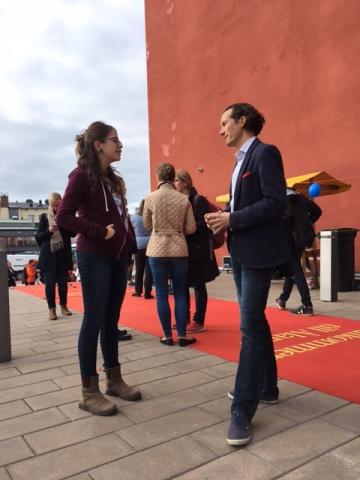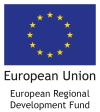Interview with Seastop´s representative Mats Örblom

After the intense work of all the applicants, the second step for our 3rd call for projects has officially closed on September 15th, making it possible to reach the final amount of 30 applications. To go beyond the numbers, we interviewed Seastop´s representative, Mr. Mats Örblom, who took part in both the European Cooperation Day and the Central Baltic Annual Event and made us discover more about the project proposal he just submitted.
To start, can you tell us about yourself?
I am working as a coordinator for the project on behalf of the town of Mariehamn, which is part of the consortium involved in the SEASTOP project proposal. I have worked in project managing for 15 years, also in Brussels, and so I am not new to the world of European funding.
What is your proposal about?
Seastop is referred to the reality of local small ports and the idea for the project came from their challenges in dealing with the kind of investments they needed, related for example to infrastructures, services and facilities such as showers, toilets and saunas, but also to electricity and waterlines. We first saw this need and then we got to know the Central Baltic Programme, and from this starting point we decided to get involved in order to develop small ports´ potential.
What results are you expecting?
If our project proposal goes through, with our project we are expecting a concrete increase in the level of services provided by small ports, so that it could be noticed that they have been updated. This will lead to an increase in cross-border travels, which means that more boats - and more people - will use these harbors.
Considering this, who are your target groups?
Of course there´s the general public, who´s welcome to the ports involved in the project, but there are also small and medium size enterprises, the companies that run the ports – that sometimes consist of one family, or just five members, for example - , and then local and regional authorities that benefit from the development of the ports and know which improvements are needed.
And how do you plan to reach your target groups?
There are basically three strategies: one consists of social media and websites – which are now the foundations of communication - , including also the use of channels developed by other projects, like the MASAPO app. In fact, attending the Central Baltic Annual Event we had the opportunity to get in touch with other CB projects, such as MASAPO.
That´s really interesting to hear, so there´s a connection, a network, between the projects.
Yes, there is.
Then, among the other strategies there´s the participation in exhibitions, as the Big Boat Exhibition that takes place in Stockholm in March, for which we have already signed up. We believe that they are an excellent opportunity to meet general public and to invite authorities as well. The third solution is focused on the ports´ organizations, who have their established communication channels.
It is important also to mention the local media and the interest they have in our activities. I can say that it´s not us calling them, but them calling us!
During the application process, what has been harder than expected?
Actually, what was more difficult was recruiting the partner organizations, although there was the possibility to get a significant part of the funding. We thought that everybody would join the project, but then some organizations jumped out even before the first step. The general thinking was that there was too much bureaucracy; even if they were interested they were afraid of drowning in paper, and of not being able to deal with the their part of funding too. So, we had to set up a pre-project organization to help all the small ports involved handling the required documents, while they only had to express their needs and plans – and that´s how we convinced everybody.
Then, what has been easier instead?
The application for the first step was actually a lot easier than we expected, it was the easiest side. After the login to the EMS we started to write the project plan and just have to check if we had too many or too little characters left.
Do you have any suggestions to improve the application process?
It is always possible to do a better estimation of the budget and also know more information from the suppliers, there is always ongoing work in that sense. And then with the public procurement you have to pay attention to the details, I can say that this was an ice-breaker for the project.
At this point, how does it feel after submitting the application for the second step?
I feel very positive about it, I think that we have chances and I am eager to start implementing the project.
Update from 1.12.2017:
SEASTOP has been selected for funding on November 30 by the Steering Committee.
The Joint Secretariat communication department just got again in touch again with Mats to ask him about how does it feel now that the project has been approved.
Mats answered that he is very happy that the efforts that the whole partnership put into writing the application have been rewarded. He also added that there has been an exchange of email among the member of the project consortium in which partners wrote that they are looking forward to start with the project implementation.


